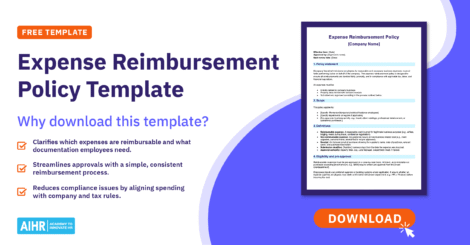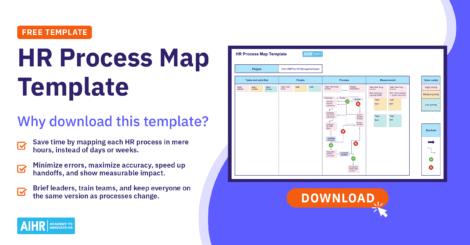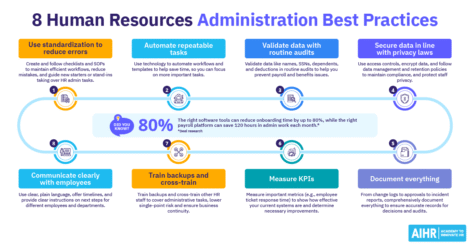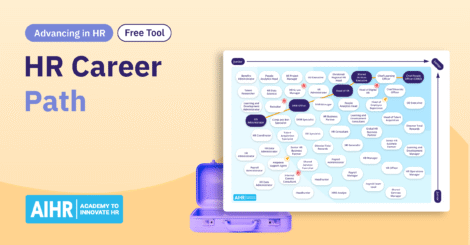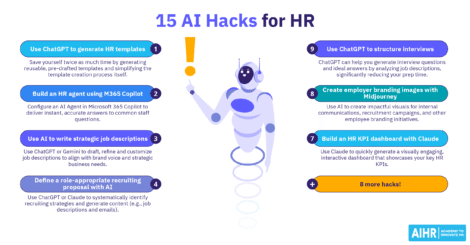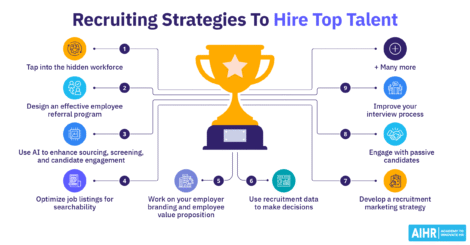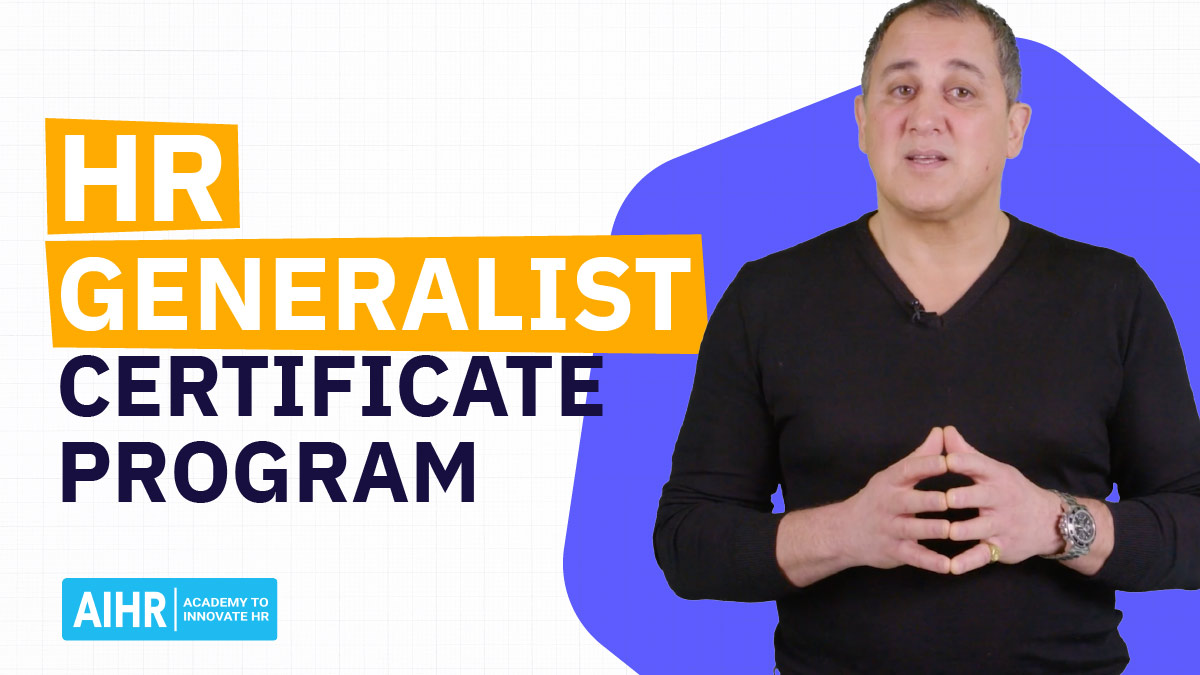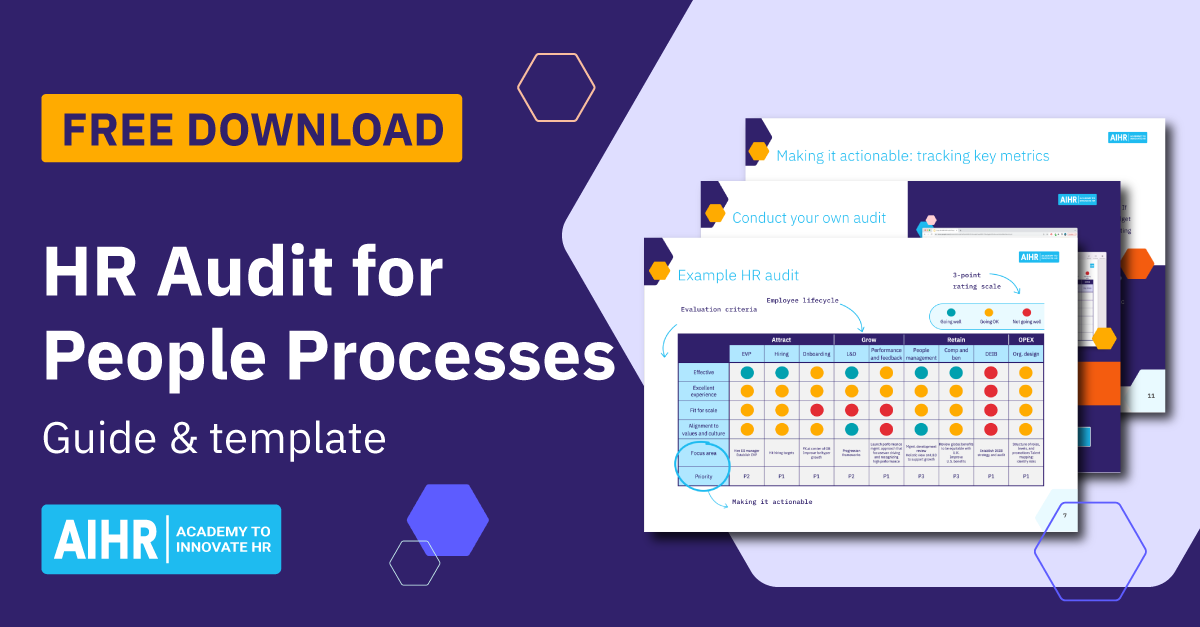A clear, well-structured grievance policy helps organizations handle workplace issues fairly and consistently. With 85% of employees experiencing conflict each year and 29% saying disagreements have made them consider quitting, a formal process is necessary to protect morale, reduce turnover, and address concerns promptly.
A good grievance policy template can help you develop and implement an effective policy, resolve workplace conflict efficiently, and ensure compliance. This article discusses the importance of a grievance policy and how a template can help build one. It also provides a free, customizable grievance policy template to get you started.
Contents
What is a grievance policy?
What does a grievance policy cover?
HR’s role in developing a grievance policy
What should a grievance policy contain?
Why use a grievance policy template?
Key sections of a grievance policy template
Free grievance policy template
8 steps to develop and implement a sound grievance policy
What is a grievance policy?
A grievance policy helps HR resolve workplace conflict effectively, fairly, and consistently. It details the process of submitting, investigating, and resolving grievances. This gives employees a straightforward way to raise their concerns formally.
A clear grievance policy is crucial to a healthy, respectful work culture, as it helps assure employees that the company takes their complaints seriously and will handle them promptly. It also helps to address conflicts before they escalate into major issues or legal action.
What does a grievance policy cover?
A comprehensive workplace grievance policy covers a range of concerns, including:
- Bullying or harassment by colleagues or managers
- Discrimination based on ethnicity, gender, age, or other protected characteristics
- Unfair treatment in work assignments, promotions, or disciplinary action
- Conflicts with team members or supervisors
- Concerns about workload, safety, or company policies.
Such a policy doesn’t just address serious legal complaints; it also helps HR prevent everyday problems from compounding. When employees feel comfortable speaking up early, you can resolve issues more quickly and smoothly.
HR’s role in developing a grievance policy
As an HR professional, you must lead the development of your company’s grievance policy. You must draft the document, outline the steps employees must follow, explain what issues they can report, and clarify how the company will respond. You must also make sure everyone understands the policy and enforce it consistently and fairly.
Ensure fairness, confidentiality, and compliance
The entire policy should reflect three key principles: fairness, confidentiality, and legal compliance. Everyone must have equal access to the process, with all complaints handled seriously and without bias. It’s also crucial to maintain confidentiality throughout the process, and keep the policy aligned with local labor laws to stay compliant and reduce legal risk.
Collaborate with leadership and legal
Don’t develop the policy in isolation. Work with leadership to ensure it fits the company’s values and day-to-day operations. Leadership support also increases the likelihood of all departments following the policy. Additionally, consult legal experts to help your organization avoid legal pitfalls and prepare for complex or sensitive cases.
Train managers and empower employees
Once the policy is ready, roll it out properly. Train managers to spot complaints, follow the process, and stay neutral. A consistent approach builds trust and avoids escalation. Make the policy easy to find — include it in onboarding, the employee handbook, or on the intranet. Staff should be able to file a grievance without any fear of retaliation.
What should a grievance policy contain?
Here’s what you should include in your grievance policy:
1. A clear definition of what can constitute a grievance
A grievance can be any concern, complaint, or dissatisfaction an employee has about their work, treatment by coworkers, or working environment. Examples include bullying, discrimination, or unsafe work conditions.
2. A step-by-step process for raising and handling complaints
Outline how employees can make complaints and how HR will handle them. This includes how and where to submit a grievance, whom to speak to about the process, and what happens after HR receives the complaint.
3. Timelines for response and resolution
Set expected timeframes for each stage of the process. This can include how quickly HR will acknowledge a grievance, when the investigation will begin, and how long it will take to resolve it. This helps manage expectations and shows a commitment to timely conflict resolution.

4. Points of contact for relevant HR staff
State clearly who is responsible for managing grievances. This could be a line manager, HR representative, or another designated person. Employees should know exactly whom to approach and who will be involved in resolving the issue.
5. A detailed appeal process
An employee dissatisfied with the outcome of a grievance investigation must be able to appeal the decision. Explain how to start the appeal process, who will review it, and how long it might take. Including this step reinforces fairness in the process.
6. Assurance of confidentiality and non-retaliation
Employees need assurance that HR will handle all grievances confidentially. They must also know that filing complaints will not result in repercussions. This makes them feel safer and more likely to bring up pressing issues promptly.
Master developing of a fair, compliant grievance procedure
Learn to build and implement a professional, effective grievance handling process that consistently ensures fairness and compliance.
AIHR’s HR Generalist Certificate Program teaches you how to identify conflict and manage grievances, determine your conflict management style, and how you can use it to handle workplace grievances professionally and sensitively.
Why use a grievance policy template?
A grievance policy template can support you in developing a policy and process. Here are some key reasons why you should use one:
Ensures compliance and standardization
Developing a policy from scratch takes time, and it’s easy to overlook key details. A good grievance policy template covers all the core components your policy needs. This not only helps you save time but ensures compliance and standardization, thereby supporting a fair, legally sound process.
Helps maintain consistency across departments
In larger organizations, different teams or business units may interpret policies differently. A central grievance handling policy template helps ensure every department follows the same procedure, applies the same standards, and works from the same definitions. This consistency also helps ensure fairness throughout the organization.
Encourages quicker adoption and rollout
A clear, ready-to-use format makes it easier to finalize the policy, get key stakeholder approval, and roll it out to the entire workforce. This also helps build trust and makes the policy more likely to be taken seriously and used properly from the start.
Reduces legal risk
A reputable grievance policy template incorporates HR best practices and aligns with current labor laws. Using a template as your starting point lowers the risk of leaving out something important that could expose the organization to legal challenges.
Key sections of a grievance policy template
Here are the sections an effective grievance policy should contain:
Policy statement
Start with a brief statement that outlines the policy’s purpose of providing clear, standardized guidelines on the company’s process of receiving, handling, and resolving employee grievances. The statement should highlight the company’s commitment to handling them compliantly and without bias.
Scope of policy
Detail who the policy applies to. This could include full-time and part-time staff, contractors, interns, or freelancers. This section should also clarify what kind of complaints the policy covers, such as grievances related to working conditions, treatment by coworkers and managers, company practices, and other work-related issues.
Definition of terms
Provide clear, concise definitions of key terms used throughout the policy, such as:
- Grievance: A formal complaint raised by an employee about workplace issues such as discrimination, bullying, harassment, unfair treatment, or safety concerns.
- Retaliation: Adverse action taken against an employee for filing a grievance or participating in an investigation.
- Grievance procedure: The steps HR takes to submit, receive, review, investigate, and resolve a grievance.
Grievance form (or link to a grievance form)
Include or link to a grievance form that employees should use to submit their complaints formally. The form should include fields for details such as the nature of the grievance, relevant dates, involved parties, and any other supporting information.
Grievance procedure
Outline the organization’s step-by-step process of receiving, investigating, and resolving grievances. This should include:
- Which HR representative staff should report grievances to
- When HR will acknowledge receiving the grievance form
- When and how HR will investigate the grievance
- When HR will provide an update on the outcome of the investigation
- How to appeal a decision if an employee is dissatisfied with the outcome
- When HR will look into and provide an update on the appeal.
Responsibilities
Clarify what’s expected from different stakeholders during the grievance handling procedure, such as:
- HR: Oversee the entire grievance procedure, ensure compliance and accurate recordkeeping, and guide both employees and managers through the process.
- Employees: Raise concerns promptly through official channels, and cooperate with HR honestly and respectfully by providing truthful, accurate information.
- Managers: Treat all grievances seriously and fairly, assure employees of confidentiality, and adhere to the process closely and consistently.
Timelines and escalation
Set clear timelines for each stage of the process — grievance acknowledgment, completion of investigation, appeal submission, and outcome of appeal. For instance, HR could confirm they’ve received grievance forms within three working days of submission, take 10 to 14 days to investigate grievances, or respond to appeals within 10 working days.
FAQs
Consider including a short FAQ section to help employees understand how the process works at a glance. You could use the following FAQs:
- Can I try to resolve a grievance informally before deciding to do so formally?
- Can I bring someone to a grievance meeting?
- Will my grievance be kept confidential?
Free grievance policy template
AIHR has created a free grievance policy template that you can download to help you develop a clear, professional, and legally sound grievance policy for your organization. The template is fully editable, so you can customize it to fit your company’s structure, tone, and procedures.

8 steps to develop and implement a sound grievance policy
If you want to start developing a robust, effective grievance policy, you can follow these eight steps:
Step 1: Assess company needs
Start by gathering feedback from employees, managers, and leadership. Find out how the company currently handles grievances, what’s working, and where there are gaps. This will help ensure your grievance procedure reflects real issues and expectations in the company.
Step 2: Choose a template
Select a grievance policy template that suits your industry, company size, and culture. A good grievance handling policy template will already include the key components (e.g., definitions, procedures, timelines, and responsibilities), so you’re not starting from scratch.
Step 3: Customize the template
Tailor the template to your organization. Add your company name, specific HR contacts, escalation paths, and any internal systems or policies referenced in the grievance procedure. Make sure the language is clear and aligned with your existing policy style.
Step 4: Conduct a legal review
Before finalizing the policy, consult a labor law expert or your legal team. This ensures your employee grievance policy complies with local laws and industry regulations, and that you’ve included necessary protections around confidentiality and non-retaliation.
Step 5: Communicate the policy
Once it’s approved, roll out the policy to all staff. Share it via email, internal portals, and onboarding materials. Ensure employees know where to view the policy, and whom to contact if they have queries. Answer their questions to help them fully understand the policy.
Step 6: Train managers accordingly
Train line managers and supervisors to understand their role in handling grievances. Cover topics like documentation, confidentiality, timelines, and when to escalate an issue to HR. This will prepare them to deal with grievances consistently and professionally.
Step 7: Test the process
Perform a trial run or case scenario to test the grievance handling policy template in action. This can help you identify any confusion or gaps, so you can make any necessary adjustments to the policy before formally implementing it company-wide.
Step 8: Update the policy regularly
Treat your grievance policy as a living document. Review it annually, after any major grievance is filed, or after significant changes to relevant labor laws. Update contact details, timelines, or legal references promptly to keep the policy accurate and relevant at all times.
To sum up
A well-crafted grievance policy shows your employees that their voices matter. Addressing concerns fairly and consistently builds trust, strengthens company culture, and protects your organization from unnecessary risk. A clear grievance procedure could even prevent conflict escalation, simply because people know they have a safe, structured way to be heard.
A transparent grievance process can also benefit a company’s reputation, both internally and externally. An employer who listens, responds, and makes changes based on feedback gives employees a reason to stay. Starting with a solid grievance policy template not only saves time but also helps you incorporate fairness into your workplace culture.










